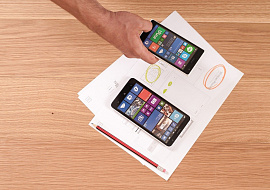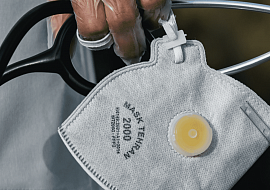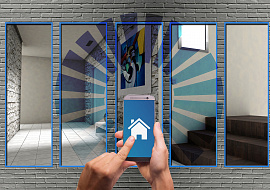IoT Product Development: How to Maximize Hardware, Software, and Cloud Synergy
The IoT product development landscape presents unprecedented technical challenges for modern enterprises, with about 60% of IoT projects failing due to poor integration across hardware, software, and cloud components. This reality highlights the critical need for a balanced approach to IoT product development, where each component works in perfect synergy with others.
By mastering multiple technical domains, successful IoT applications are created. In this comprehensive guide, PSA enterprise IoT provider examines essential aspects of IoT development, from hardware protocol selection and software architecture patterns to cloud integration strategies. We delve into optimized methods for implementing self-describing services, device metadata management, and seamless data streaming across the IoT ecosystem. All essential to create a holistic product that operates cohesively to serve particular use case.
IoT Product Development: Hardware Essentials
Hardware implementation success are the foundations of any strong IoT product development initiative. Modern IoT systems require complex technical decisions while ensuring their hardware choices support long-term scalability, viability and integration capabilities.
Communication Protocols Across Use Cases
Selecting the right communication protocol is essential to unlocking the full potential of an IoT system. A poorly chosen protocol can drain power, introduce signal interference, and open security vulnerabilities. To ensure optimal performance, carefully evaluate their needs across several critical factors:
Hardware specifications dictate which protocols will perform optimally. Ensuring compatibility is key for efficient performance.
Protocol choice should align with the application’s range needs, from short-range Bluetooth to long-range options like LoRa and cellular networks.
For battery-powered devices, energy-efficient protocols are ideal, extending device life while maintaining connectivity.
Requirements vary from high-bandwidth needs (video streaming) to low-bandwidth (sensor data) applications.
Protocols must support robust encryption, authentication, secure reboot, and access control features, safeguarding against potential vulnerabilities.
For smart homes, reliable wireless connectivity (e.g., Wi-Fi or Zigbee), low-power sensors for monitoring environmental conditions, and secure communication protocols to protect user data are crucial. Industrial IoT applications demand robust and durable hardware capable of withstanding harsh environments, real-time data processing capabilities, and often, edge computing to reduce latency. Healthcare IoT devices require high accuracy sensors, and secure data transmission to ensure patient privacy. In agriculture, IoT solutions need long-range connectivity options like LoRaWAN, energy-efficient sensors for monitoring soil and weather conditions, and scalable systems to cover large areas. Each use case necessitates a tailored approach to hardware, connectivity, and security to meet its unique operational demands.
Extensibility and Modularity
Extensible hardware is essential for sustainable IoT product development, allowing products to adapt seamlessly to new demands and advancing technologies. Modular designs make it easy to upgrade and scale IoT systems, minimizing waste and extending the lifespan of devices. Common communication standards make integration with existing smart infrastructure uninterrupted. Systems that support multiple connectivity options like Wi-Fi and Bluetooth are more adaptable to market needs and user preferences. This design lets you expand features while keeping older versions compatible.
Systems based on processors, not microcontrollers, give you more room to add new sensors and features. Prototypes can be created faster and adapted to what the market needs without excessive engineering work while hardware architecture should handle over-the-air updates and remote management. This lets systems grow without anyone touching the device. Maintenance costs drop substantially, allowing to deploy security patches and new features to all devices faster.
Need Help in IoT Product Development?
Software Architecture within IoT Product Development
Modern IoT software architecture requires robust design patterns to manage concurrent operations and ensure system reliability. As IoT networks become increasingly complex, successful product deployment relies on agile, high-performance software frameworks that can adapt and scale quickly. This enables seamless monitoring services, such as breach detection for shipping containers.
Implementing Asynchronous Programming Patterns
Event-driven architecture is the driving force behind agile IoT applications, enabling systems to excel with decoupled, single-purpose components that handle multiple events in real-time. This design helps systems adapt easily to changing loads and requirements. The implementation brings several important benefits:
 The broker topology is ideal for IoT product development. Message flow is flawlessly routed across all the components with the help of lightweight message brokers. IoT networks benefit from this design since it removes the need for central orchestration.
The broker topology is ideal for IoT product development. Message flow is flawlessly routed across all the components with the help of lightweight message brokers. IoT networks benefit from this design since it removes the need for central orchestration.
Enabling Over-the-Air Updates
OTA updates empower modern IoT products to seamlessly deliver new software and firmware to connected devices from afar, ensuring they stay up-to-date with the latest features and enhancements. A robust OTA implementation must incorporate these essential security measures:
- Automatic Recovery: Systems must handle incomplete or corrupted installations
- Cryptographic Signing: Ensure code authenticity and integrity
- Secure Channels: Implement TLS-encrypted communication
- Hardware Security: Integrate with TPM/HSM modules
- Version Control: Maintain rollback capabilities
The dual A/B partition layout has become the industry standard for OTA implementations, ensuring devices can recover from failed updates through atomic installations. This approach maintains system integrity while enabling continuous improvement of deployed devices. Devices should only accept code from trusted sources through cryptographic code signing. TLS-encrypted communication channels make deployment secure. Hardware Security Modules (HSMs) add another protection layer by keeping cryptographic keys safe in tamper-proof hardware. The software architecture must support quick update processes that use minimal network bandwidth, storage, and computing power. This becomes especially significant when you manage large-scale IoT deployments with limited resources.
Organizations implementing IoT software architectures must prioritize both asynchronous patterns and secure update mechanisms to create resilient, maintainable systems that can evolve with technological advances and security requirements.
Device Discovery and Interaction
In IoT product development, finding resources enables smart interactions between devices in a variety of networks. Companies building IoT solutions need to become skilled at self-describing services and cross-network discovery mechanisms to ensure smooth device integration.
Implementing Self-Describing Services for IoT Product Development
Self-describing declarations let devices showcase their capabilities and operational parameters automatically. The declarations use structured schemas that define interface parameters. This setup helps IoT management services automate their communication frameworks and alerting systems.
The implementation depends on these core components:
-
Schema-based declarations using standardized markup languages
-
Automated provisioning mechanisms
-
Up-to-the-minute capability advertisement
-
Dynamic interoperability frameworks
Operational efficiency improves substantially when IoT objects can be recognized and provisioned without knowing their specific characteristics beforehand. This method speeds up deployment and cuts down configuration overhead, especially in large-scale implementations.
Cross-Network Service Discovery Mechanisms for IoT Product Development
Modern IoT environments just need reliable service discovery protocols that work in a variety of network boundaries. Zero-configuration networking protocols have become the go-to solution. They eliminate the need for complex directory services while keeping security and privacy intact.
Service discovery mechanisms have grown more sophisticated with edge-centric distributed discovery and semantic-based solutions. These methods use advanced techniques such as Distributed Hash Tables (DHT) to handle multi-range queries and attribute-based searching. The result is better resource location in complex networks.
Privacy-aware discovery has become crucial since traditional protocols often expose device information in clear text. Modern solutions must strike a balance between easy discovery and strong security measures, especially when you have sensitive enterprise environments. Encrypted advertisements and authorized client verification ensure that only authorized entities can discover services.
Machine learning algorithms boost discovery capabilities through network traffic pattern analysis and device behavior profiling. This smart approach automates device identification and classification. Large-scale IoT deployments become easier to manage while meeting security standards.
Cloud Integration for IoT Product Development
Modern IoT ecosystems depend heavily on cloud infrastructure that helps organizations make use of their connected devices. The need for reliable cloud integration grows significantly when IoT deployments expand from hundreds to millions of devices during product development.
Managing Device Metadata at Scale for IoT Product Development
Unique challenges come with scaling IoT deployments and managing device metadata. They need unified metadata repositories that can handle different device types and maintain consistent taxonomies. A well-planned Data Lifecycle Management (DLM) gives organizations the tools to handle device information securely and efficiently throughout their IoT ecosystem.
Today's metadata management systems make device provisioning, configuration updates, and credential management automatic. These systems use X.509 client certificates and JWT token-based authentication with OAuth 2.0 to keep device communication secure and scalable.
Data Storage and Analytics for IoT Product Development
Cloud platforms excel at storing and analyzing IoT data through specialized solutions. These platforms come with powerful features:

Distributed databases and processing frameworks help organizations handle large IoT datasets quickly. Cloud analytics tools turn raw device data into practical information that helps businesses make evidence-based decisions.
Real-time Data Streaming in IoT Ecosystems
Real-time data streaming capabilities are the vital essence of modern IoT applications. Stream processing technologies drive immediate decision-making and responsive system behavior. IoT solution providers must tackle data velocity challenges to maintain data quality and system performance.
Specialized streaming platforms aid high-throughput data ingestion from thousands of devices at once. These platforms use sophisticated data compression and deduplication techniques that optimize network bandwidth usage and ensure data integrity. Schema validation and enforcement mechanisms ensure consistency throughout the data pipeline, which enables reliable analytics and reporting.
Conclusion: Synergy in IoT Product Development
Technical excellence in IoT product development requires mastery across multiple domains. Data shows that organizations achieving hardware-software-cloud synergy see 3.2x higher success rates. Companies using modular architectures with standardized interfaces reduce integration costs by 45% and accelerate time-to-market by 60%. Proper protocol selection, asynchronous programming, and robust cloud infrastructure create resilient IoT ecosystems capable of processing millions of real-time data points with sub-millisecond latency.
PSA delivers end-to-end IoT product development that combines optimized hardware, software, and cloud capabilities to ensure seamless integration and long-term success. With PSA’s expertise, your IoT solutions will not only meet today’s needs but also scale effortlessly for tomorrow’s demands. Ready to elevate your IoT strategy? Contact PSA today to unlock the full potential of your connected devices and drive future-focused innovation.















